

The July meeting will be at 7:00 pm on the 19th at the University of Tennessee Space institute, room H111.
The July program will be presented by John Lucas, a
member of the Tennessee Association of Woodturners. John, an
accomplished woodturner, will present a program on “Making Tools”. He
will be explaining how you can make tools for your specific needs. This
program should be of interest to everyone.
Looking forward to seeing you at the July 19th meeting.
Additional information will be available on these events as the time draws near.
(becoming a member at the June meeting)
Be sure to meet all of our new members and welcome them to the club.
 |
Larry Willard ------ Wartrace |
 |
Joe Ferraro ------ Decherd |
 |
Woody Floyd ------ Bell Buckle |
The annual turning bee was held on June 18th. About 25 eager “turners” descended on Tom Cowan’s shop for the activity. Everyone had a great time and came away from the activity with at least one “roughed” bowl. Thanks to Tom for hosting the event and the mentors for imparting their knowledge and skills to the attendees.
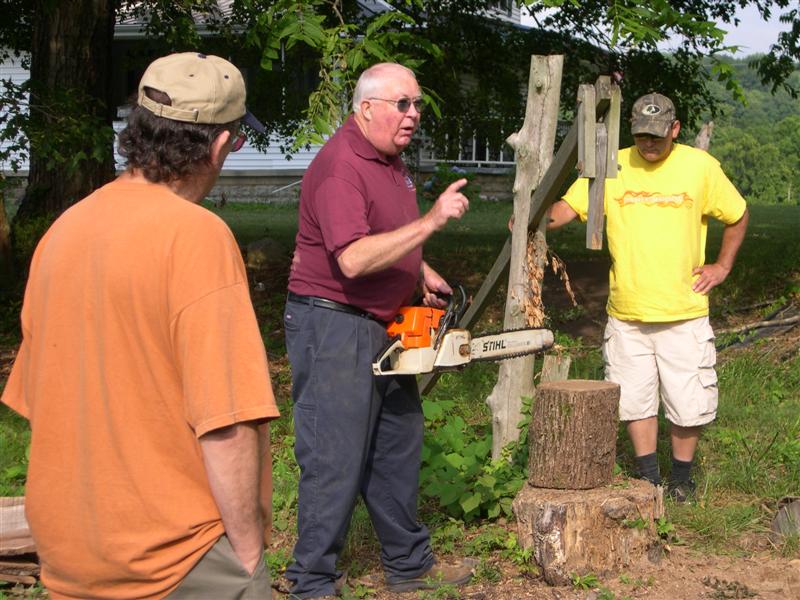
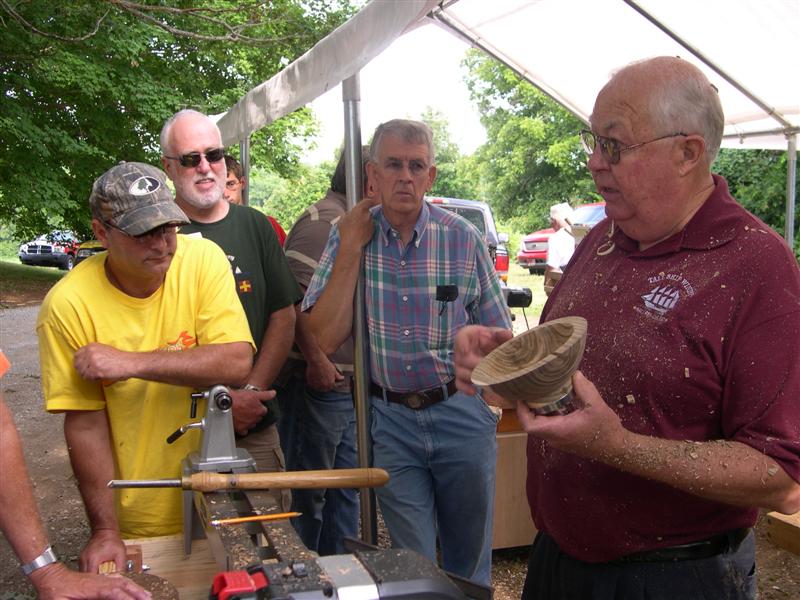
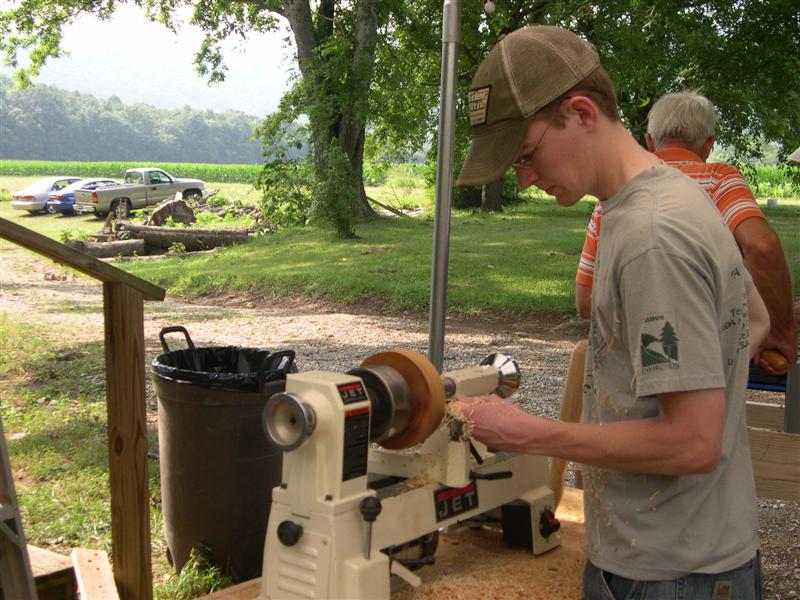
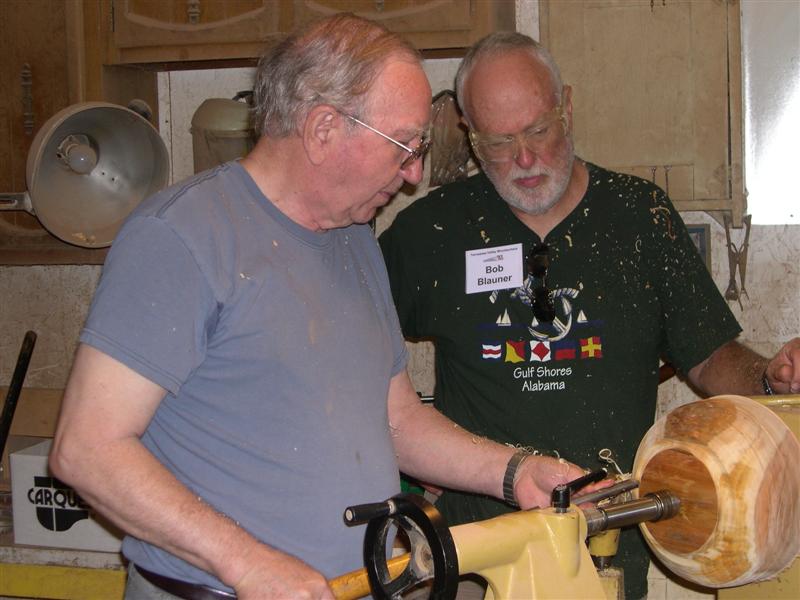
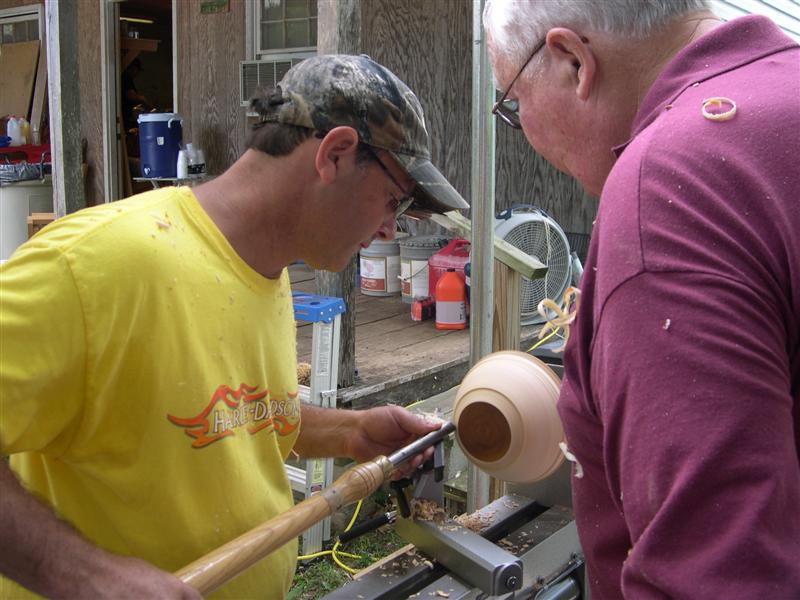
Watch for the announcement of the next “Shop Tour” schedule. It could be your shop, so keep it clean.
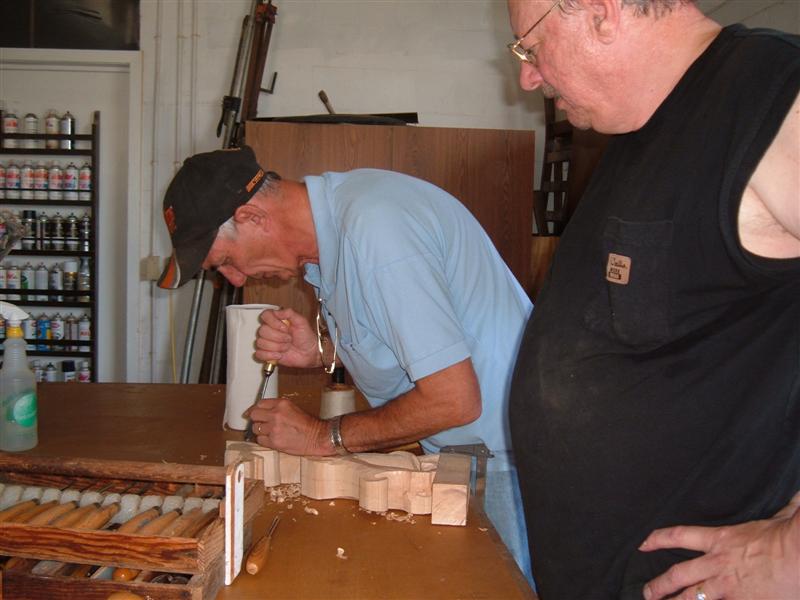
The carvers met on July 2nd at Phil Bishop’s shop.
Those attending worked on individual projects and shared information
within the group.
The next major event for the carvers is the Polly Crocket Festival in
Cowan. The event dates are September 17-19.
The carvers normally meet on the first Saturday of each month and work
on individual or group projects.

Great News --- seven new DVD's have been added to the
club library. Check out the library listing on our website or check the
list at the
next meeting.
Please remember that you can now view some of the club
DVDs on line. Go to the library listing on our club website and click on
the underlined titles.
For a complete list of all items in the Digital Library, see Henry Davis
at club meetings, email him at hdavis37@charter.net or call him at
393-3191 and leave a message.
Just a reminder, if you have a library selection out, it is due to be
returned at the next meeting.

 |
Sid Matheny – walking cane |
 |
|
 |
Vince Zaccardi – four small bowls from cherry with a wax finish |
 |
Ken Burgess – two hollow vessels (maple) and a natural edge bowl (cherry) |
|
|
Kevin Deuermeyer - intarsia horse |
|
|
Geoff Roehm - guitar (Spanish cedar, mahogany neck; inlaid mother of pearl. The inlay was done with CNC router. |
 |
Tony Murphy - 12ga shotgun holder, a Greene & Greene style gun barrel holder mount and a “Unit Coin” display for his commander's retirement. |
To view the "Link of Interest" on our web site, please click here.
If you have woodworking items for sale or are looking for woodworking items, please send information to Chuck Taylor at 931-728-7086 or email to taylorcw@bellsouth.net .
Ever have problems cutting tenons on your table saw and the tenon depth not being the same on all parts or winding up with stepped shoulders? If you have this problem, think about making a tenon-cutting sled. You can attach the sled to your miter gage or install a runner to fit in your table slots.
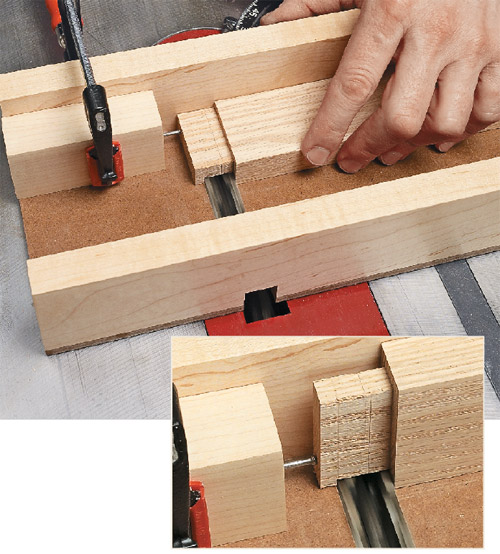
The sled is just a hardboard platform with a couple of wood fences. It uses a single point stop to gauge the length of the tenon. Drive a finish nail into a stop block and clamp it to the sled. Using the finish nail as a reference point for all the shoulder cuts results in perfect tenons every time.
The fast-growing box elder was widely planted throughout the East and
Midwest for street shade and windbreaks until the early 20th century.
However, because it lacked the beauty, resistance to storm damage, and
long life of its more glamorous cousin, the sugar maple, the practice
eventually was discouraged. Box elder's comparatively soft, light wood
never attained the woodworking status of the hard and often
distinctively grained sugar maple.
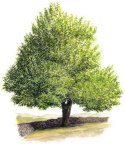
You'll find box elder called by a number of local names - ash-leaf maple,
sugar ash, and Manitoba maple to name a few. The box elder mostly
inhabits stream and river bottoms, and lake shorelines. Rarely does a
box elder reach 100 years of age. Box elder's pointed leaves resemble
those of white ash, but with more scallops. The wood of box elder, at 27
pounds per cubic foot dry, weighs nearly the same as white pine and
rates as the lightest and weakest of the American maples. Close-grained
and creamy white in color, box elder tends to be brittle. Sometimes a
box elder tree contains wood that carries raspberry-colored streaks and
flecks, a property that woodturners find especially appealing for bright
bowls, slender goblets, and attractive platters. The red streaks are
composed of a pigment from a fungus.
Uses in woodworking
The light wood lends itself to boxes, carvings, turnings, toys and
simple furniture. Spalted box elder, with its raspberry streaks, is
highly prized for accent work and turnings.
The wood isn't suitable for outdoor projects.
The following companies are supporters of the TVW club. Click on their "logo" to go to their web site.